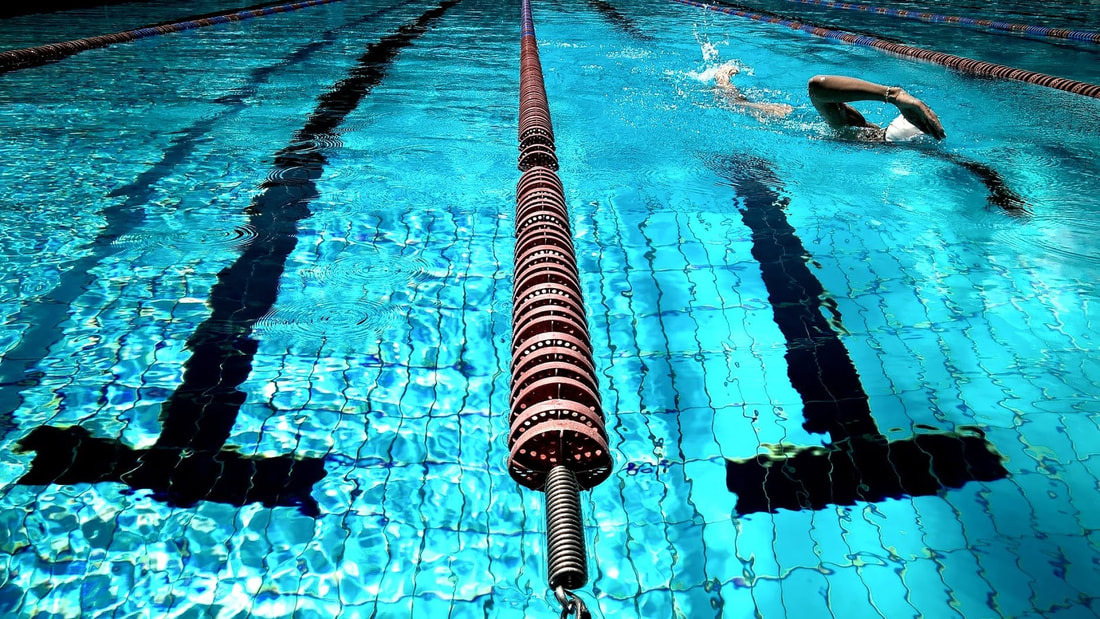The Key to Improved Swimming Performance
Jul 11, 2019
Shoulder volume. This is the first thing that comes to mind with I have the opportunity to work with youth swimmers. A typical club or high school swim team will average around 40,000 to 60,000 yards in a week of practice and the average athlete will have a stroke count of about 12 to 15 strokes per 25 yards, giving you a range of 19,200 to 36,000 strokes per week...that’s a TON of volume on the shoulders!
With such a high demand on swimmers’ shoulders, injuries are incredibly common, so common in fact experts coined the term “swimmer’s shoulder” as an umbrella diagnosis. That being said though there are a number of steps you can take to prevent injury, the most crucial of which being to improve your movement efficiency. Movement efficiency is key to not just preventing injury, put to improving performance. Think of it this way. Performing 36,000 strokes a week with poor mechanics is like trying to drive a Ferrari with the handbrake on; sure, you’ll still be able to move and potentially pretty damn fast, but you’re going to leave a ton of performance on the table, in addition to breaking down way quicker and more often.
In order to know to know where a deficiency is happening, you must break down each stroke into its component parts. For the sake of this article, we will focus on freestyle. Each freestyle stroke can be broken down into five main phases:
- Entry Phase: Where the hand enters the water
- Catch Phase: This is the part where your hand is being used to begin propelling your body forward.
- Pull Phase: This is the phase where your body rotates, your hand travels under your body, and is where you can really start to generate speed
- Push Phase: The final phase where your hand is under water, this is where you push your hand back up towards your body
- Recovery Phase: The final phase of the stroke, this is where your hand comes out of the water and comes forward to the entry phase position.
When looking over all the different component phases that make up a freestyle swimming stroke, something becomes abundantly clear… internal rotation is crucial. From the catch phase all the way through the recovery phase, internal rotation is necessary in order to perform the freestyle stroke effectively and efficiently. That’s why you’re always hearing your coaches scream out cues like: “Keep a high elbow;" “Drag your fingers;” and “Point your elbow to the ceiling.” All are various cues for internal rotation.

The problem is though, we see a ton of swimmers who are missing adequate internal rotation. When you’re missing internal rotation and you try to go into a “hang position” (see picture above) you will compensate by dipping your shoulder forward. This is a big problem because when you dip your shoulder forward you’re putting your rotator cuff in a weakened position, putting unneeded stress on your biceps tendon and labrum, and decreasing your power output. Add all that together and multiply it 36,000 strokes you're doing in an average week and it becomes easy to see why this is a recipe for disaster.
So how do you know if you’re missing internal rotation and what can you do if you are? Well, check out the video below to assess your shoulder range of motion and see if you hit the minimum of 70 degrees of internal rotation we like to see our athletes to hit. If you don’t have the needed range or it is a struggle to get there, check out the following two videos for a couple of our favorite ways to improve your shoulder rotation.
(Internal Rotation Self-Assessment)
(Internal Rotation Superfriend Stretch)
(Banded Internal Rotation Stretch)
Lacking internal rotation is one of the main reasons why we see swimmers, especially youth swimmers, in our clinic in Decatur, GA. However, the shoulder is an incredibly complex joint and there could be a number of reasons in addition to a lack of internal rotation causing pain in a swimmer’s shoulders. If you’re still struggling with shoulder pain or noticing a decrease in performance after working on your shoulder internal rotation you live we’d love to help. Simply give us a call at 470-355-2106 or fill out the contact request form below and we’d be happy to contact you.
Thanks for reading,
-Dr. Jake, PT, DPT, CSCS
Let us help you figure out to live your best active life today!
Remember, Movement is Medicine!

